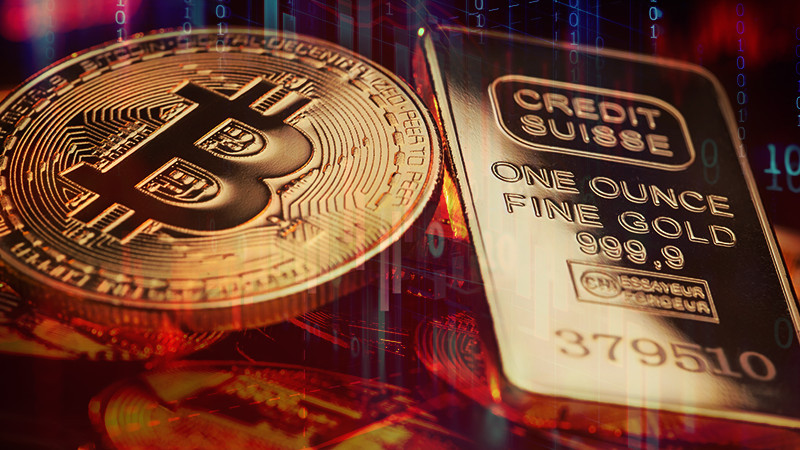
Cryptocurrencies are electronic payment systems that function exclusively in virtual space. They have their own monetary units, and all transactions with them are protected by cryptographic encryption.
Such systems are decentralized, that is, they do not have a single regulatory body.
The very term "cryptocurrency for beginners" appeared in April 2011 after Forbes magazine published an article about the first cryptocurrency, Bitcoin.
How cryptocurrencies work and what cryptocurrency is backed by gold
Cryptocurrencies are not physical. Their turnover can take place exclusively in a virtual environment, or, to be more precise, in electronic wallets.
Most often, the data about users' trading accounts and all their buying or selling operations is stored in the system in encrypted form. Encryption utilizes the blockchain-distributed database technology.
A blockchain is a continuous, sequential chain of blocks that are lined up with each other according to a certain principle and that contain certain information. These blocks are linked by numbering and the fact that each block has its own hash sum and the hash sum of the block that comes before it.
The operation of this entire payment system is maintained by users and various volunteers who run its application on their personal computers.
Most cryptocurrencies, including the popular bitcoin, operate without a regulatory body, that is, they are not controlled by anyone or anything.
As a rule, the emergence of new virtual coins is a result of mining, which is carried out by users by running a special application. Virtual money is transferred to its owners by means of the computing power of personal computers.
How cryptocurrencies appeared

The first version of software designed to work with the Bitcoin payment system appeared on the Internet in January 2009. Its author is a certain Satoshi Nakamoto, whose identity has not been revealed yet. Probably, under this pseudonym lies not one person but a group of people or even technological corporations.
At the very beginning of its emergence, this new currency was used exclusively by a narrow circle of enthusiastic programmers.
Bitcoin was first used as a means of payment on May 22, 2010. Then a programmer from the state of Florida, Laszlo Hanich, decided to use bitcoins to buy pizza.
Mining bitcoins was much easier back then, but there was nowhere to spend them. Being hungry, Hanich decided to spend the virtual coins he had accumulated at least for a snack. He wrote a message to his colleagues on one forum where he offered to transfer 10 thousand units of the new currency to anyone who agreed to buy him two pizzas.
A user under the nickname Jerocs responded to this request, and he did not regret it. Having spent about 40 dollars on two pizzas, he received an impressive number of bitcoins, which, after a while, grew to several thousand dollars.
In 2010–2011, the first cryptocurrency exchanges began to appear in the virtual space, where you could exchange bitcoins for real money.
Already in the spring of 2011, bitcoin rose to parity with the US dollar. During the same period, other cryptocurrencies, analogs of BTC, began to appear. Their main difference from the first cryptocurrency was the method of encryption, but there were other features. The new cryptocurrencies were named Litecoin, Ethereum ("ether"), Ripple, and Dogecoin.
In 2017, there was a split of bitcoin: there were regular Bitcoin and the more secure (as developers claim) Bitcoin cash.
In 2011, BTC was increasingly used by those engaged in illegal activities (such as drug trafficking). They were attracted to the cryptocurrency by the fact that they could conduct all transactions with it anonymously.
Since 2013, it has been possible to pay for services and goods in some online stores with bitcoins. In the same period, cryptocurrency became actively used in hotel bookings.
However, in 2017, many services and manufacturers began to refuse to accept payments in bitcoins, although they had previously willingly accepted them. The fact is that BTC then had a very unstable exchange rate, subject to sharp fluctuations.
In early 2016, the price of one unit was $400, but by the end of 2017, it had reached almost $20,000. After a very short time, the cost of bitcoin decreased to $3,500. At the end of 2020, the currency resumed gaining in value and reached $50,000–60,000.
What cryptocurrency is backed by gold
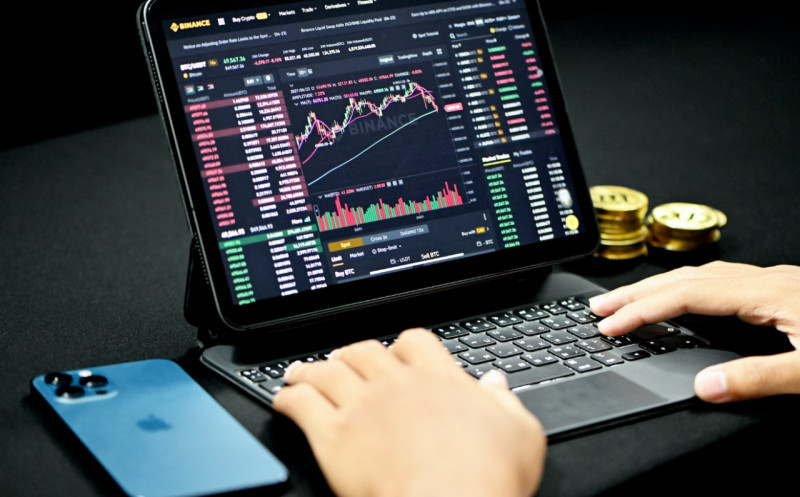
The price of bitcoin, the number one cryptocurrency, hit a 20-month high of $42k in November 2023. Bitcoin has a market capitalization of over $819 billion.
As of December 8, 2023, bitcoin's annual percentage growth was the most significant since 2020.
As of October 2021, there are almost 13 thousand virtual coins on the market. The most popular of them:
- Ethereum, capitalization is $266 billion, price is $2.2 thousand.
- BNB, capitalization - $38.7 billion, price - $252.
- Tether, capitalization - $90.7 billion, price - $0.99.
- USD Coin, capitalization - $24.2 billion, price - $1.
The first official state cryptocurrency was launched in Venezuela, it was called Petro. It was launched by the country's government on February 20, 2018. The cryptocurrency was supposed to help the country cope with the rampant economic crisis and severe inflation of the official monetary unit, the bolivar.
The price of Petro was secured by the price of a barrel of oil produced on the territory of Venezuela. Time has shown that the decision of the authorities was hasty. This cryptocurrency did not gain popularity and did not become widely used either in Venezuela or abroad.
As for cryptocurrencies, most of them are not backed by physical reserves. Some virtual coins are pegged to gold and fiat currencies.
For example:
- Tether is pegged to the US dollar.
- DigaxDAO is backed by gold bars (they are stored in the issuing company's safe in Singapore).
Blockchain assets are not tied to physical assets, which means that they have no single issuer and no guarantee of protection of users' rights. The exchange rates of such virtual money tend to fluctuate wildly.
The price of cryptocurrency reflects the peculiarity of the structure of the projects in which they function:
- decentralization, i.e. there is no single control center
- limited number of coins
- complete transparency of all transactions, i.e., any user can find information about to which address and in what quantity the funds were sent.
What is backing cryptocurrencies? The price of a particular coin is formed by supply and demand. Demand, in turn, depends on the belief of the crypto community in the reliability of the virtual asset.
Formally, digital money is provided by the value that the seller has determined for the conditional asset.
We can say that digital money is very similar to paper money. Our familiar currencies are secured by the government's promise to use them in exchange for goods or services.
Cryptocurrencies are secured by the seller's guarantee to exchange a notional commodity into a specific number of virtual coins.
What backs Bitcoin
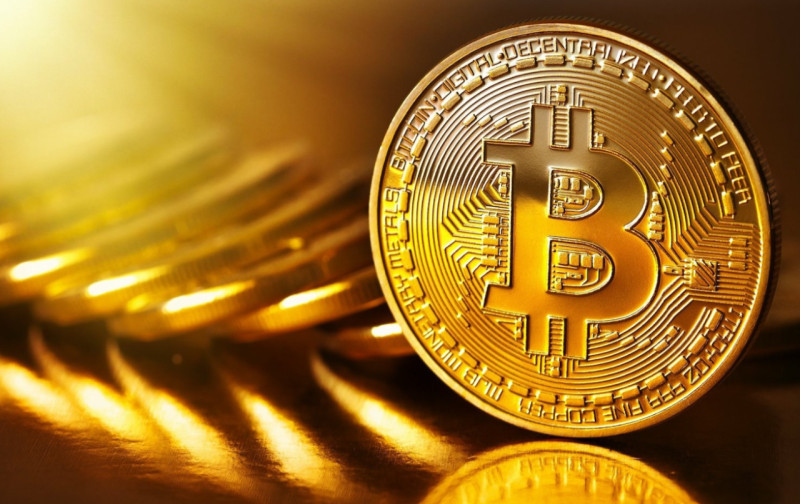
The bitcoin price is volatile, it is constantly changing. In April 2021, one coin cost $63 thousand, but in July, the price collapsed to $29,800. In October of the same year, Bitcoin managed to recoup losses, and one coin cost $64 thousand.
Since its appearance, the world's main what cryptocurrency is backed by gold has risen in price several million times. In 2009, at the dawn of its existence, the New Liberty Standard resource (the site that first offered the purchase of bitcoins) set its price at the level of only $0.000764.
Bitcoin, like any cryptocurrency, has no physical expression. One always has a distrust of the intangible.
A couple of years ago, having plastic cards was a rarity. Almost all people withdrew the funds transferred to them on payday and then simply put the plastic card on the shelf for a whole month.
Now, of course, this is hard to imagine, as plastic cards are constantly in people's pockets and we pay for any services and goods with them. Today, it is impossible to leave home without a bank card, which contains intangible money in electronic form.
Nowadays, even pensioners use self-service terminals very confidently and install mobile apps. Thus, they do not touch real bills and coins for weeks.
Each digit in a bill has an equivalent, that is, the amount indicated on the account can always be received in cash. A cashless transaction could be used to pay for goods or services, just like cash. The coin in the account is always equal to the minted coin.
The main difference between Bitcoin and conventional money is that there is no organization to issue coins. It is impossible to change the price of the cryptocurrency. Bitcoins can be obtained mainly through mining, which means that the process of their emergence is completely decentralized, so artificially creating their scarcity is impossible.
There is an opinion that money and its purchasing power are secured by certain values. For example, the more expensive oil and gold are, the higher the exchange rate of a particular currency will be.
Bitcoin, on the other hand, is not backed by either gold or oil. This is unusual, which is why it raises doubts among the public.
However, the situation is a bit different. For example, the price of the pound sterling used to be backed by gold, which is stored in a bank that issues banknotes. However, over time, banks began to issue banknotes based solely on trust, without reference to the amount of gold in reserves.
The same situation exists with the dollar, whose price is actually 10 times lower than the banks officially declare. For this reason, gold backing for fiat money is no longer relevant.
Thus, today, the situation with currencies is as follows: they cost as much as people are willing to pay for them. Gold backing is no longer the most important and is far from the only way to increase liquidity and value.
No one can draw or print bitcoin to lower its value. It is not possible to create an artificial scarcity of this digital currency.
The BTC ecosystem is a completely decentralized system, and it has no owners. Coins are issued exclusively by a network of miners, namely millions of constituent blockchains of the system's participants. This is not a fast process, which simplifies all calculations in the end.
How can one determine what the cryptocurrency is backed by and what value it has if there is no issuing company? To do this, you need to consider:
- Cryptocurrency is just a set of numbers that came into existence as a result of mathematical calculations. When it appears, resources are spent, and they are also the cost of production. As a result, this cost will grow every year, it will become more and more difficult to decode blocks, and therefore more energy will be spent on mining. Making the mining process more complex and expensive will boost the BTC price.
- One should remember that BTC issuance is strictly limited. By 2034, 21 million units will be mined. After that, mining will stop, and the number of existing coins will only decrease.
- Demand for bitcoin, of course, raises its price. However, this process should not be perceived as endless. The fact that people are willing to give any fiat currency for BTC makes it pricey.
- It is important that Bitcoin has already started to function as a legal tender in some countries. For example, it is accepted by stores and online services and can be used with Paypal and WebMoney.
Actually, all these facts support Bitcoin. We will talk more about them below.
From the very moment when two pizzas were sold for 25 BTC, the first what cryptocurrency is backed by gold has gained its value, and, obviously, it is unlikely to fall to this level. However, only time will show what limit the asset could reach.
Cryptocurrencies vs. fiat money

There is a popular belief that the exchange rate of national currencies is supported by a country's gold and foreign currency reserves as well as its gross domestic product (i.e., the total income of the country's citizens and its companies for a given period of time).
It used to be like that some time ago.
Nowadays, the value of fiat money directly depends on the economic situation in the country and the actions the government takes in domestic and foreign policy.
The issue of fiat money in circulation (their emission) is almost unlimited. Central banks print new banknotes and regulate their circulation on the territory of the state.
The main fiat currencies are the US dollar, the euro, and the pound sterling. The dollar is the most common currency for international transactions.
As for cryptocurrencies, they, unlike fiat money, do not have a physical equivalent. Thus, the volume of bitcoins put into circulation, as well as other digital coins, is predetermined. Users are able to mine crypto assets on their own, using the power of their PCs.
In other words, all digital assets are backed by the cost of mining, limited issuance (it is known in advance how many virtual units will be put into circulation), and demand on the crypto market.
The main advantage of cryptocurrencies is that they allow anyone, regardless of location, to get direct access to any financial services. However, it is not so easy to open a bank account because it is important to provide a lot of personal information, including an address.
We know that billions of people around the world may not have an address at all, which means that they will not be able to use the services of a bank in the financial system we are used to.
Cryptocurrencies are different: absolutely anyone can use electronic money. All they need is a device with an internet connection.
In addition, unlike fiat money, all what cryptocurrency is backed by gold transactions are anonymous. Although cryptocurrency transactions are public, no personal information is recorded. The only available things are the addresses of users' electronic wallets and the amount of the transaction.
Mining

Mining is the extraction of cryptocurrencies. This is one more answer to the question about factors that back cryptocurrencies.
Cryptocurrency miners confirm their transactions, add them to new blocks, and get coins for them.
As for Bitcoin, its price is halved almost every four years. This fundamental process is called halving.
Thus, in 2023, miners received 6.25 BTC per block. Some of the coins were sold to offset the cost of electricity and expensive mining equipment.
The impressive trading volumes are weighing on the price of the cryptocurrency. At the very beginning of the crypto industry, selling a large batch of virtual coins could significantly reduce their price. In such cases, traders took the wait-and-see approach.
However, after BTC's halving in May 2020, the influence of miners on its network began to diminish gradually.
From 2021 on, those with computing equipment for mining began to sell their virtual coins, even though they could have kept them for years.
This decrease in cash flow volatility could be mainly explained by a decline in the reward for mining virtual coins.
According to CoinMetrics, the total amount of bitcoins in miners' wallets decreased markedly. In 2015, the total amount was 25%, whereas in 2021, it was 18%.
The drop in BTC accumulation means that miners will no longer have the influence on the crypto market that they used to have by selling coins.
Limited mining
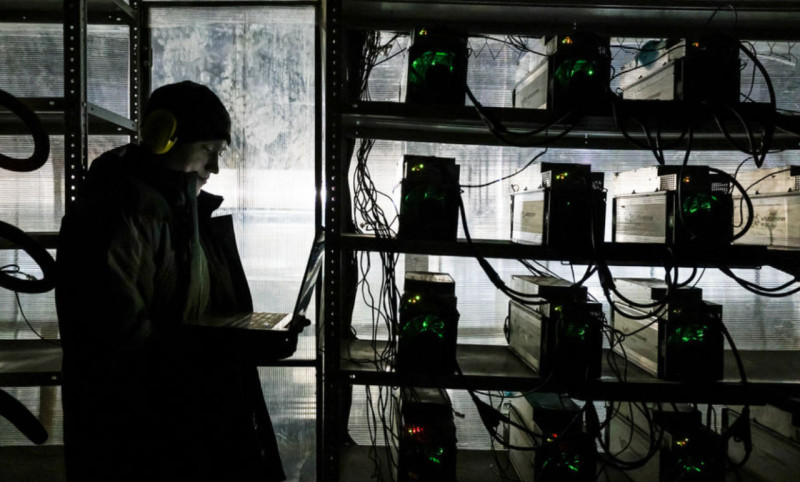
If the production of any new virtual coins is limited or stopped, the number of these coins in the market falls, thus boosting the price.
Thus, BTC supply is limited. The total number of BTC issued will hardly reach 21 million. By the way, the last bitcoin should be mined by 2140. During the bullish market in 2017, a lot of crypto beginners came to the market, buying coins until the price rose to $20,000.
Other crypto traders were actively interested in those assets that cost many times less than BTC, such as the Ripple cryptocurrency. When bitcoin jumped to $20,000, Ripple rose to $3.8.
Traders hoped that the rate of the altcoin would begin to grow significantly but forgot about the issue of 100 billion coins. If we recalculate the capitalization of Ripple, which was in December 2017 (remember that the coin was issued in limited quantities—only 21 million units), it turns out that now it would be worth a little more than $18 thousand. Today, XRP against the US dollar is trading at 0.609.
Another example of an altcoin with the same limited issuance is Yearn Finance (YFI). There were just 36,666 thousand units issued. In 2020, the cryptocurrency managed to grow in value by more than 4,000%—from $907 to $43 thousand. In May 2021, the YFI price reached an impressive value of $82,700, and in October of the same year, it was already trading at $35.8 thousand per unit. Today, the YFI price is $8,366.48.
Cryptocurrency cannot be counterfeited
Digital money has no tangible expression; it cannot be touched, hidden, transferred, etc. In fact, it is a code that cannot be altered or counterfeited.
The fact that the mining of new bitcoins is limited helps to trace every transaction with it and find out where the coins were obtained and where they were spent.
All transactions with cryptocurrencies in the blockchain network are transparent. It is a certain sequence of actions in a given unified algorithm. No one can create another block, it is simply impossible.
However, hypothetically, one may cheat the system. We are talking about double spending, i.e., paying for two different goods making just one transaction. To do this, a network participant must have huge computing power. Given the size of the Bitcoin blockchain, it is impossible to implement such a scam in practice.
Cryptocurrencies and faith in technology
The creation of new platforms and the development of new blockchain-based technologies have a positive influence on virtual money prices.
The main goal of what cryptocurrency is backed by gold platform creators has always been to preserve privacy and decentralization while keeping transaction costs as low as possible. The more advanced a cryptocurrency is, the more chances it has for active and rapid growth.
The price of virtual coins also grows due to the areas in which they can be used. The wider the range of these areas is, the higher the price of the virtual asset grows.
In 2023, payment systems that perform transactions with cryptocurrencies will become very popular. An example is CoinsPaid, a company that develops products for interacting with cryptocurrencies in B2B and B2C.
The active use of blockchain technology in business favors the entire cryptocurrency industry because it increases public confidence in cryptocurrencies. The population begins to show increased interest in electronic money, and the rate of the most popular and socially recognized crypto-assets begins to skyrocket at this time.
Status of cryptocurrencies in different countries
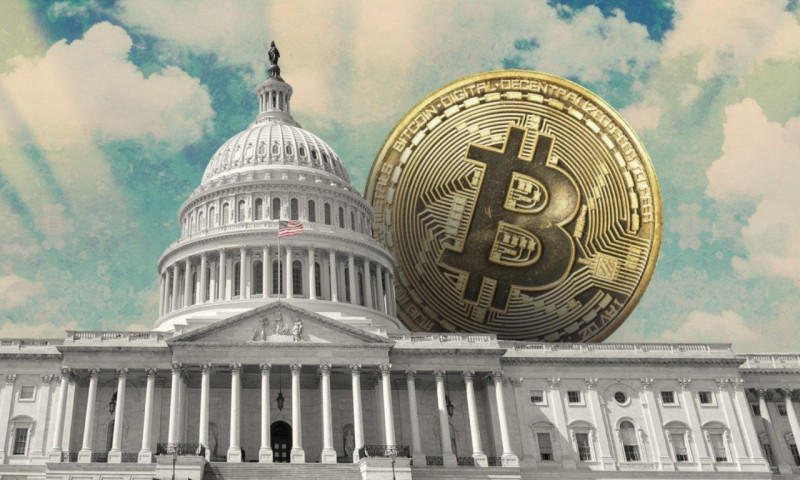
Bitcoin, like most other virtual coins, is not tied to national currencies or assets. Its weight in the market is based solely on the trust of its holders.
The price of cryptocurrency is determined by virtual exchanges that realize trading operations, that is, exchange it for real money. That is why cryptocurrencies are recognized as high-risk assets. The principle of their existence is similar to a financial pyramid (that is, a fraudulent project that imitates profitable investments).
Thus, in 2017, chairman and chief executive officer of JPMorgan Chase Jamie Dimon spoke negatively about cryptocurrencies, calling them a means of fraud. The head of the world's largest financial organization compared crypto assets to the Tulip mania, which lasted from 1637 to 1638. Moreover, Dimon promised to fire any employee of his bank who dared to trade crypto assets.
At the end of 2013, the volume of BTC transactions reached such a scale (illegal business was also added there) that it attracted the attention of the authorities of many countries. The issue of regulating all this electronic money arose immediately.
In many countries, including the European Union and the United States, the circulation of bitcoins is not prohibited and is not regulated at the legislative level. However, the governments of these countries are still in favor of strengthening control over operations with cryptocurrencies as soon as possible.
Many heads of state even intend to introduce an increased tax for any transaction involving the use of virtual money.
To date, different states have different attitudes towards virtual money. Financial organizations are prohibited from conducting any transactions related to them.
A lack of regulation and signs of a financial pyramid scheme are not the only claims against cryptocurrencies. The fact is that the electricity costs of mining annually reach 200 billion kW/h. This amount of consumed electricity corresponds to its annual volume, which is consumed, for example, by the whole of Turkey.
In addition, the rapid spread of mining has provoked a speculative rise in the price of computer components. A video card was recorded as having the highest demand and the fastest price growth, as their chips are the most adapted for mining.
Countries that banned cryptocurrencies
Many countries have banned the use of cryptocurrencies on their territory by both individuals and legal entities. These are Egypt (in 2018), Nepal (in 2017), Bolivia (in 2014), Algeria (in 2018), and Bangladesh (in 2017). Countries such as Qatar and Bahrain have banned investing in cryptocurrencies on their territory, but allow their citizens to do so abroad.
Vietnam also introduced a ban on the circulation of cryptocurrency. Since 2017, one may get a large fine of up to $8.7 thousand for using crypto assets. At the same time, the authorities of the country did not introduce a law on mandatory control over the purchase of cryptocurrencies.
In China, it has been forbidden to carry out transactions with cryptocurrencies to all financial organizations since 2013. In 2017, the Chinese government closed all exchanges that were trading crypto assets.
China also banned mining in 2018 and any exchange of virtual coins in 2021.
You may also like:
What is Cryptocurrency Used for
When was the First Cryptocurrency Created
How to Make Money on Cryptocurrency








 Back to articles
Back to articles

